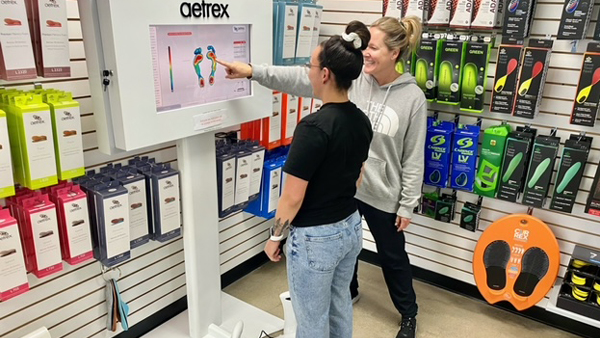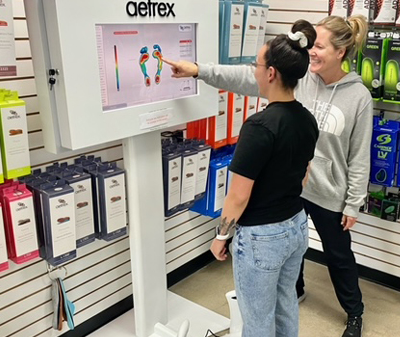RIA Benchmarks in Action


What is different about getting data from UQ Cadence?
We tried a couple of other data reporting platforms like our POS system, and they were not as convenient. UQ seems to dissect the information in such a way that makes it so much more accessible and meaningful. I can literally push a button and am able to get information that I need immediately.
What is an example of the meaningful data?
When we’re trying to determine how many units of footwear of a certain brand we have sold, I can pull a POS report, but I can also go into UQ and look into each brand and model. I don’t need to create a special report, because in Cadence I can see it at a glance. The ease of getting the data makes it so accessible that it’s a huge time saver. If we’re looking to make a decision about whether to bring in a new vendor or drop a vendor, I look at the data, not just for us but also what is the data from the industry saying. We can review problems and make informed decisions.
How do you use the Team Leaderboard feature?
That’s how I get to the specific data by store and by employee including percentages and overall statistics. For example, when I review email data capture rates. I can enter any date timeframe I want. If we are having a campaign and I want to look at that specific information for that timeline, I can drill down for the specific information I need.
What data do you view most frequently?
The component I probably use most often is data related to each individual staff member. It has made such a difference in collecting customer data. In Cadence, I can see who is capturing it and who is not capturing it at the employee level and store level. I can see how many transactions they are ringing up, and whether they are capturing customer email addresses.
Has the collection of customer emails improved as a result of this knowledge?
We were collecting contact information for 40% of our customers. We were not doing a good job prior to UQ, but we couldn’t tell who was collecting it and who wasn’t. With the data from UQ and incentivizing employees to reach customer information capture levels, we were able to double that rate. That alone is worth every dime that we put into UQ; it is well worth it.
How do you integrate this data analysis into your workflow?
I am a data-driven person so I do look at the data weekly. There is so much info in UQ that there is an endless amount of data we can focus on. We choose to tackle one area at a time or it can be overwhelming and take up too many resources. We may choose to focus on an area like our insole sell-through rate, or an area we are not doing well in for a month so we can make informed decisions on how to make improvements.
How do employees respond to this data use?
We’re transparent about how we use the data, and want our staff to be able to see it and use that information to make us better. When you have competitive runners working on your staff, they are looking at other store results because competition is in their DNA, so they like the data, too.
Some content and resources may not be visible because you're not logged in. If you are a current member, use the login form below. Not yet a member? Join today!
More from the RIA
-
2026 Summit Retailer Registration is Open!
-
TRE Activations
-
A letter from the Executive Director - Never Static and Always Moving Forward.
-
November is National Run Safety Month - Learn How to Merchandise your Store
-
PDC Update: Version 2.0 Brings Major Improvements
-
President's Letter - Board Nominations
-
Slingin’ Shoes Podcast
-
A Letter from your RIA President
-
RIA Huddle Announcement - October 2025
-
A Letter from the Executive Director